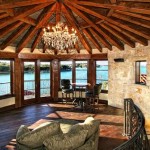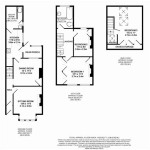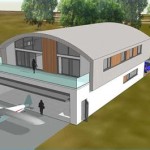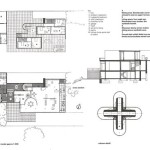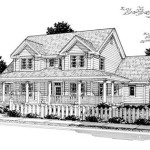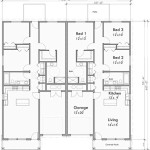Essential Aspects of Home Plans for Cold Climates
Building a home in a cold climate presents unique challenges that require careful planning and consideration. From insulation to heating systems, every aspect of the design should be tailored to withstand the harsh conditions and ensure a comfortable living environment. Here are some essential elements to incorporate into your home plans for cold climates.
1. Insulation: Insulation is paramount in preventing heat loss and keeping the interior of your home warm. Choose high-quality insulation with a high R-value, which indicates its resistance to heat flow. Consider insulating walls, ceilings, and floors thoroughly, including around windows and doors.
2. Windows and Doors: Windows and doors are potential sources of air leaks, so it's crucial to select energy-efficient options. Look for double- or triple-glazed windows with low-emissivity (low-e) coatings to reflect heat back inside. Choose well-insulated doors with weatherstripping around the frames.
3. Heating System: A reliable and efficient heating system is essential for maintaining warmth during cold months. Consider options such as geothermal heat pumps, radiant floor heating, or high-efficiency furnaces. These systems provide consistent and evenly distributed heat throughout the home.
4. Draft Prevention: Sealing gaps and cracks around windows, doors, and other openings is crucial to prevent drafts and cold air from entering the home. Use caulk, weatherstripping, and draft guards to eliminate any potential sources of air leakage.
5. Ventilation: While insulation and draft prevention are important, proper ventilation is also necessary to maintain a healthy indoor environment. Install energy recovery ventilators (ERVs) or heat recovery ventilators (HRVs) to exchange stale indoor air with fresh outdoor air while recovering heat.
6. Roof Design: The roof of your home plays a significant role in protecting against cold and snow. Choose a roofing material with high insulation value and ensure proper ventilation to prevent ice dams and moisture accumulation.
7. Landscaping: The surrounding landscape can also affect the thermal performance of your home. Plant trees on the south side to block cold winds and use shrubs and ground cover around the foundation to prevent snow from drifting against the exterior walls.
By incorporating these essential aspects into your home plans, you can create a comfortable and energy-efficient living space that will withstand the challenges of cold climates. Remember to consult with an experienced architect or builder to ensure your design meets local building codes and regulations.

15 Smart Design Choices For Cold Climates

Passive Design Strategies For Cold Climate

Winter S Most Wanted House Plans Houseplans Blog Com

Winter S Most Wanted House Plans Houseplans Blog Com

15 Smart Design Choices For Cold Climates

Alluring Small House Ideas Style Excellent Interior Design Unique Plans Floor Plan One Story

15 Smart Design Choices For Cold Climates

Winter S Most Wanted House Plans Houseplans Blog Com
Net Zero House For A Cold Climate Jlc

Built For Energy Efficiency In A Cold Climate

